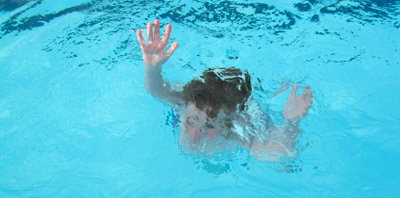FIRST AID WHEN CARING FOR CHILDREN

Are you confident that you know what to do to save the life of a child?
- In a swimming pool, a child is in water out of his depth and
panicking.
- On a day trip to the sea a child is stung by a jelly
fish.
- An infant stops breathing while in the care of a Nanny.
- A nursery school child chokes on a small toy.
- At school, two children collide on the football pitch, one has a nose bleed and
the other is knocked unconscious.
- Outside a school, a child is knocked off his bicycle
by a passing car and suffers head injuries, cuts and bruises.
- A child is choking on a piece of food at meal
time.
- Approximately 45% of unintentional injuries and deaths occurred in and around
the home. These are caused primarily by road traffic accidents, fire and
burns, suffocation, drowning, firearms, falls, choking and poisoning.
- The leading cause of injury to children is falling over. Children aged 14 and under
account for 33% of all fall-related visits to hospital emergency rooms.
- Drowning is also a leading cause of death among children of 14 and under. The majority
of which occur in the sea and in residential swimming pools. However, it should
be noted that children can drown in as little as 3cm of water.
- In infants under the age of 1, choking is the leading cause of death.
- In Greece, there are a large and increasing number of reported burn injuries to
children caused by fireworks.
If you interact regularly with children you know that accidents
happen. Fortunately, most often these incidents are insignificant, resulting
in simple scrapes and bruises. We generally accept that this is all part of growing
up. However, there are times when children suffer from significant medical problems.
Car accidents, serious falls, choking, serious bleeding, near drowning, poisoning
and allergic reactions can be very frightening for children, parents and rescuers
alike. By becoming an Emergency Responder you will be fully trained to deal with
these situations and make a difference.
By learning
basic life support skills you will become confident in your ability to handle
situations involving injured or ill
children and you will be empowered to give emergency help. You can’t
control all the variables, but you can offer assistance that may improve a child’s
chances of a positive recovery. If you are willing
to step up and help, you become an important link between the problem’s onset and
the arrival of professional medical personnel.
Professional child carers who become Emergency Responders have
the added security in knowing that they could make a difference in dealing with
emergency situations effectively. If you are involved in professional child care,
are a nanny, a school
teacher or sports teacher you should consider our 12 hour care for children course.
Continue reading more about our Pediatric First Aid Training course.